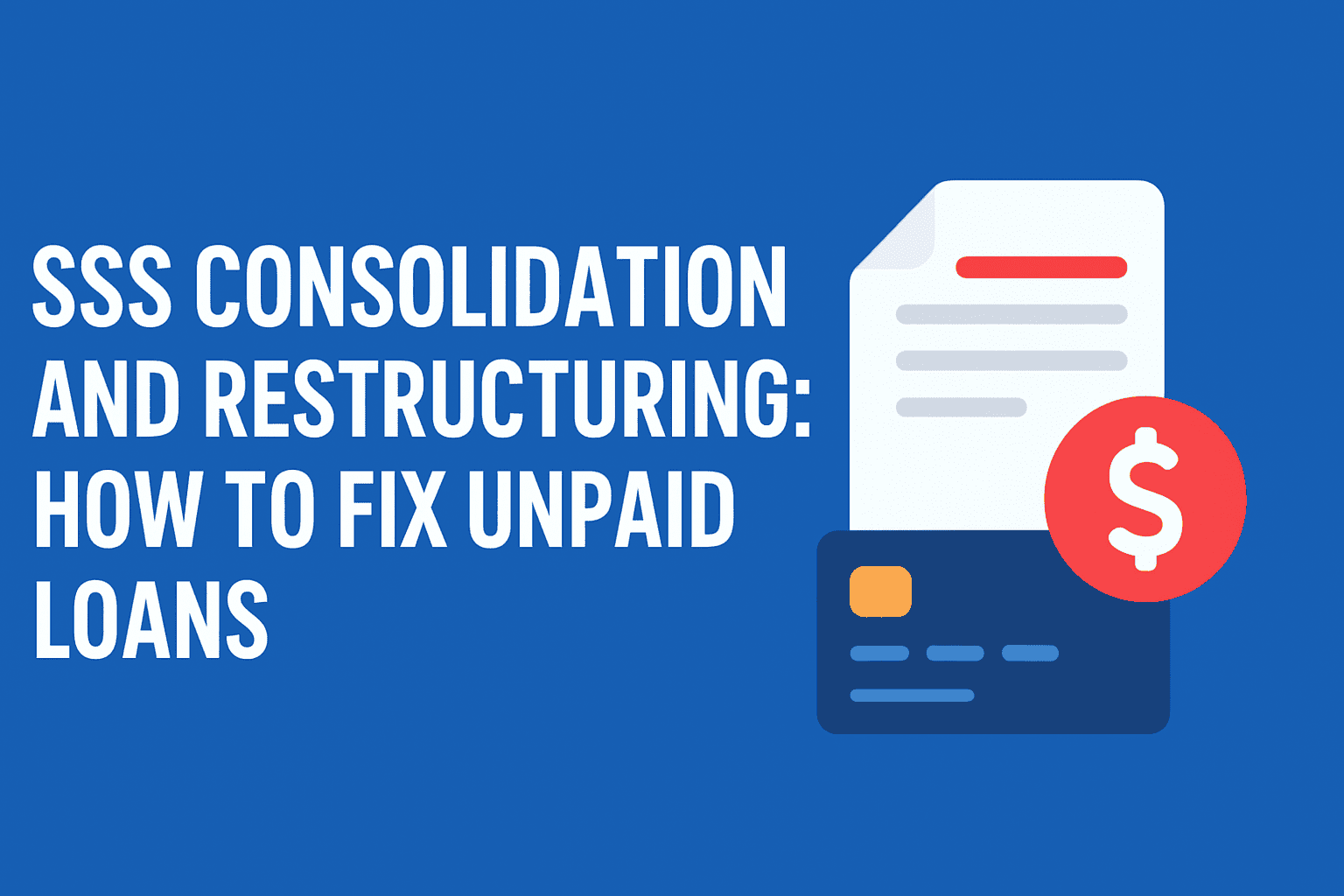If you have an unpaid SSS loan, you already know the drill: your balance keeps growing because of interest and penalties. The good news? The Social Security System (SSS) offers Loan Restructuring Programs (LRP) and Loan Consolidation so you can fix your records, stop the penalties, and finally settle your debt.
In this article, we’ll break down how these programs work, who can apply, and what steps you need to take.
What is SSS Loan Restructuring?
The SSS Loan Restructuring Program (LRP) is designed for members who can’t pay their overdue SSS loans in full. Instead of facing ballooning penalties, SSS lets you restructure your loan so you can:
- Stop additional penalties from growing
- Pay in affordable installments
- Fix your loan records so you can borrow again in the future
This is especially useful if your loan has been overdue for years.
What is SSS Loan Consolidation?
Loan consolidation, on the other hand, is when SSS combines all your unpaid loans into a single loan account. This is usually offered to help you manage multiple obligations (e.g., a Salary Loan and an Emergency Loan) under one payment plan.
Think of it as merging all your loan headaches into one, so you can focus on clearing it without juggling different due dates.
Who Can Apply for SSS Loan Restructuring or Consolidation?
Generally, you can apply if:
- You have an overdue SSS loan (Salary Loan, Calamity Loan, Emergency Loan, etc.).
- You haven’t availed of any SSS restructuring program in the last few years (unless stated otherwise in the new guidelines).
- Your loan has already incurred penalties and interest.
Pro tip: SSS often opens restructuring programs during special periods, so watch out for official announcements.
Benefits of SSS Loan Restructuring
- Penalty condonation – All or part of your penalties can be waived.
- Affordable terms – Pay in monthly installments instead of a lump sum.
- Clean record – Restructuring helps restore your good standing with SSS.
How to Apply for SSS Loan Restructuring or Consolidation
The process may vary depending on the latest SSS program, but here’s the usual step-by-step guide:
Step 1: Check if the Program is Available
Visit the official SSS website or their Facebook page to confirm if LRP or consolidation is currently offered. Not all months have an open restructuring period.
Step 2: Prepare Your Requirements
Common requirements include:
- Valid government-issued ID
- SSS number
- Statement of Account from SSS
- Filled-out Loan Restructuring Application Form (available at SSS branches or downloadable from their website)
Step 3: File Your Application
You can usually file through:
- SSS Branches – Go to the nearest SSS office and submit your application.
- SSS Online (My.SSS) – Some restructuring programs can be applied for online.
Step 4: Choose Your Payment Term
SSS may offer options like:
- Lump sum payment
- Installments (often up to 60 months depending on the program)
Step 5: Start Paying
Once approved, make your payments on time to avoid penalties again.
Important Reminders
- Penalty condonation is not permanent. If you fail to complete the agreed payments, SSS may reimpose penalties.
- Restructuring is different from condonation. Condonation removes penalties; restructuring changes the terms so you can pay better.
- Check if your SSS account is eligible before going to the branch to avoid wasted trips.
Blogger’s Corner
Unpaid SSS loans can feel like a never-ending problem, but the truth is, the sooner you deal with them, the sooner you can stop the snowball effect of interest and penalties. Restructuring or consolidating your loans might not erase your debt overnight, but it gives you a clear plan to become debt-free—and that’s a huge relief.
If you’re eligible, grab the opportunity when SSS opens these programs. After all, a clean SSS record means you can borrow again when you really need it.
